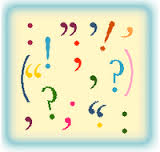So this blog post kind of snuck up on me. I had no idea what to write about, until… I went to the dentist. Weird, huh? There’s just something about sitting with your mouth gaping open for over an hour, the screech of the drill in your ear, and the metallic smell of your tooth being ground down that makes you think of something – ANYTHING- to distract you. (My apologies for those who may have just experienced their own dental chair flashback. I know that’s not fun).
Since it was highly unlikely that the dentist was going to pull out some Star Trek type instrument and instantly zap the crown on my tooth – painlessly of course. I decided I’d be better off trying to zap my brain elsewhere. Where does an avid reader – and writer — send herself on a much needed mental trip? A book, of course.
The first thing that popped into my head was actually the movie The Princess Bride. If you’re not familiar with this classic, a grandfather (played by actor Peter Falk) visits his grandson who is sick. He reads to him from The Princess Bride, a book by William Goldman. But the book is awesome too. Like the movie, it is filled with pirates, sword fights, a giant and even true love. It is an AWESOME book to read when you want to escape the blahs (or the whirring of a drill)

But if pirates aren’t your thing, then there’s always wizards. And who wouldn’t want to go on a visit to one of the timeless Harry Potter books by the wonderful J.K. Rowling? Wizards, a 3-headed dog, secret magic, and an the ultimate in evil doers “He who must not be named”. What a FANTASTIC place to visit on your mental journey. (And if you haven’t checked out the new covers for the books, they are AMAZING!)




Or perhaps you are looking for more light-hearted fun with a mystery twist. Then try out your patriotic flair for Kate Messner’s book Capture the Flag.
Three kids  get caught up in an adventure of historic proportions!
get caught up in an adventure of historic proportions!
Anna, José, and Henry are complete strangers with more in common than they realize. Snowed in together at a chaotic Washington D.C. airport, they encounter a mysterious tattooed man, a flamboyant politician, and a rambunctious poodle named for an ancient king. Even stranger, news stations everywhere have announced that the famous flag that inspired “The Star-Spangled Banner” has been stolen! Anna, certain that the culprits must be snowed in too, recruits Henry and José to help catch the thieves and bring them to justice.
But when accusations start flying, they soon realize there’s more than justice at stake. As the snow starts clearing, Anna, José, and Henry find themselves in a race against time (and the weather!) to prevent the loss of an American treasure.
Into sports? Take a swing at Gordan Korman’s Swindle

After a mean collector named Swindle cons him out of his most valuable baseball card, Griffin Bing must put together a band of misfits to break into Swindle’s compound and recapture the card. There are many things standing in their way — a menacing guard dog, a high-tech security system, a very secret hiding place, and their inability to drive — but Griffin and his team are going to get back what’s rightfully his . . . even if hijinks ensue.
This is Gordon Korman at his crowd-pleasing best, perfect for readers who like to hoot, howl, and heist.
Feeling spooky? Listen in on a ghost chat. These books are written entirely in the form of letters. And the real surprise is that one of the character’s is a ghost writer. Literally. She is really dead and yet she’s an author. Cool, huh?
When I’m having a bad day, I always pull one of these books off the shelf. It’s sure to perk me “write” back up!



And finally, if you feel the need to tickle your funny bone, take a look at some of Donna Gephart’s books. They always make me smile.



I know, you’re dying to ask – did all of these books run through my head the hour I was sitting in the dentist chair? The answer is YES! Well, them, plus a few other things, like, did I forget to let the dog out before I left? Did I move the laundry to the dryer yet? And what do I need from the grocery store on the way home. (After all, I am a mom, too)
But the single overwhelming thought that kept running through my head was — WHEN will this drilling ever end???
The lesson here is that next time you’re stuck somewhere you don’t want to be, send your brain on a mental holiday. Imagine yourself inside a book!
Any of these books above will do exactly that – make you feel like you get to visit a new world for a little while. One without runny noses, fevers, aches and yes, even dentist drills. ENJOY them all!!
Now, I want to know what book YOU like to read when you’re sick – or trying to distract yourself from a dental procedure. Put it in the comments below. Let’s see how many books we can come up with to escape the realities of our days.
***
Jennifer Swanson is the author of a bunch of nonfiction books. When she is not writing, she is flossing and brushing her teeth REALLY well so that she does not have to have another crown put on!








